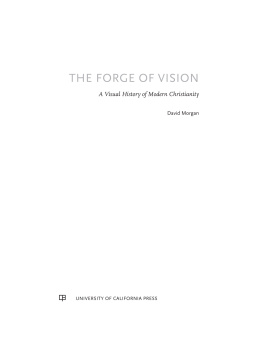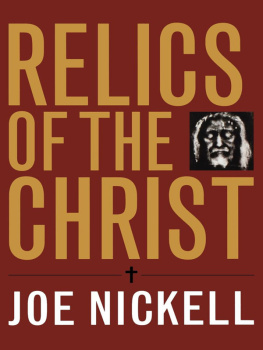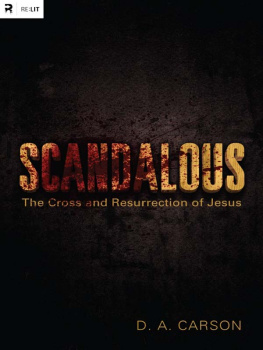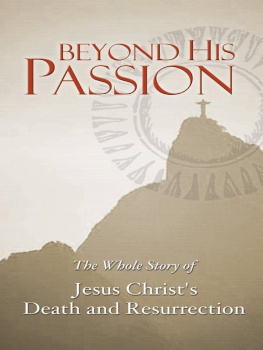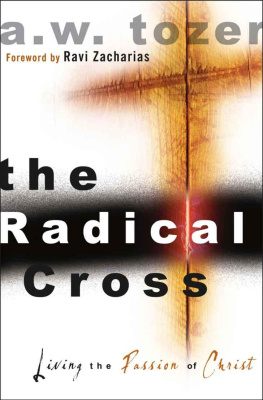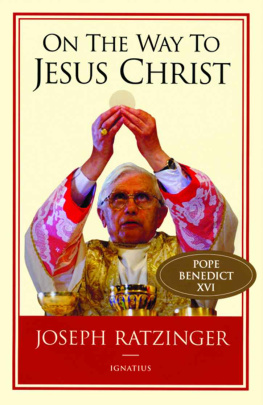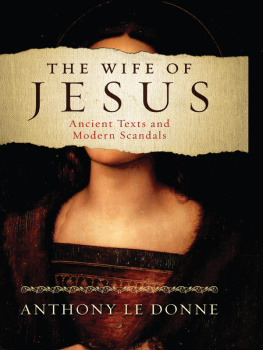Jesus Christ - The passion
Here you can read online Jesus Christ - The passion full text of the book (entire story) in english for free. Download pdf and epub, get meaning, cover and reviews about this ebook. City: London, year: 2005, publisher: Penguin Publishing, genre: Religion. Description of the work, (preface) as well as reviews are available. Best literature library LitArk.com created for fans of good reading and offers a wide selection of genres:
Romance novel
Science fiction
Adventure
Detective
Science
History
Home and family
Prose
Art
Politics
Computer
Non-fiction
Religion
Business
Children
Humor
Choose a favorite category and find really read worthwhile books. Enjoy immersion in the world of imagination, feel the emotions of the characters or learn something new for yourself, make an fascinating discovery.

- Book:The passion
- Author:
- Publisher:Penguin Publishing
- Genre:
- Year:2005
- City:London
- Rating:5 / 5
- Favourites:Add to favourites
- Your mark:
- 100
- 1
- 2
- 3
- 4
- 5
The passion: summary, description and annotation
We offer to read an annotation, description, summary or preface (depends on what the author of the book "The passion" wrote himself). If you haven't found the necessary information about the book — write in the comments, we will try to find it.
The passion — read online for free the complete book (whole text) full work
Below is the text of the book, divided by pages. System saving the place of the last page read, allows you to conveniently read the book "The passion" online for free, without having to search again every time where you left off. Put a bookmark, and you can go to the page where you finished reading at any time.
Font size:
Interval:
Bookmark:
PENGUIN BOOKS
THE PASSION
Geza Vermes was born in Hungary in 1924. He studied in Budapest and Louvain, where he read Oriental history and languages and in 1953 obtained a doctorate in theology with a dissertation on the Dead Sea Scrolls. From 1957 to 1991 he taught at the Universities of Newcastle and Oxford. His pioneering work on the Dead Sea Scrolls and the historical figure of Jesus led to his appointment as the first Professor of Jewish Studies at Oxford, where he is now Professor Emeritus. Since 1991 he has been director of the Forum for Qumran Research at the Oxford Centre for Hebrew and Jewish Studies. Professor Vermes is a Fellow of the British Academy and of the European Academy of Arts, Sciences and Humanities, the holder of an Oxford D.Litt. and of honorary doctorates from several British universities. Professor Vermess books include The Complete Dead Sea Scrolls in English (1997), The Changing Faces of Jesus (2000) and The Authentic Gospel of Jesus (2003), all published by Penguin.
GEZA VERMES

PENGUIN BOOKS
PENGUIN BOOKS
Published by the Penguin Group
Penguin Books Ltd, 80 Strand, London WC2R 0RL, England
Penguin Group (USA) Inc., 375 Hudson Street, New York, New York 10014, USA
Penguin Group (Canada), 10 Alcorn Avenue, Toronto, Ontario, Canada M4V 3B2
(a division of Pearson Penguin Canada Inc.)
Penguin Ireland, 25 St Stephens Green, Dublin 2, Ireland
(a division of Penguin Books Ltd)
Penguin Group (Australia), 250 Camberwell Road,
Camberwell, Victoria 3124, Australia (a division of Pearson Australia Group Pty Ltd)
Penguin Books India Pvt Ltd, 11 Community Centre,
Panchsheel Park, New Delhi 110 017, India
Penguin Group (NZ), cnr Airborne and Rosedale Roads, Albany,
Auckland 1310, New Zealand (a division of Pearson New Zealand Ltd)
Penguin Books (South Africa) (Pty) Ltd, 24 Sturdee Avenue,
Rosebank 2196, South Africa
Penguin Books Ltd, Registered Offices: 80 Strand, London WC2R 0RL, England
www.penguin.com
First published 2005
1
Copyright Geza Vermes, 2005
All rights reserved
The moral right of the author has been asserted
Revised Standard Version of the Bible, copyright 1952 (2nd edition, 1971)
by the Division of Christian Education of the National Council of the Churches
of Christ in the United States of America. Used by permission. All rights reserved
EISBN: 9780141900452
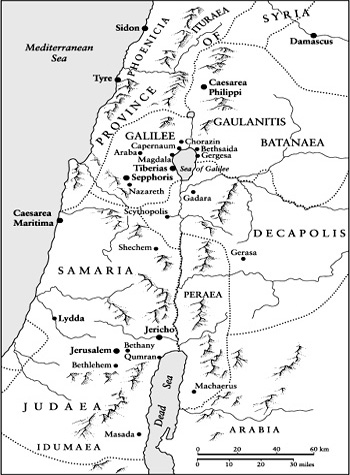
Palestine in the age of Jesus
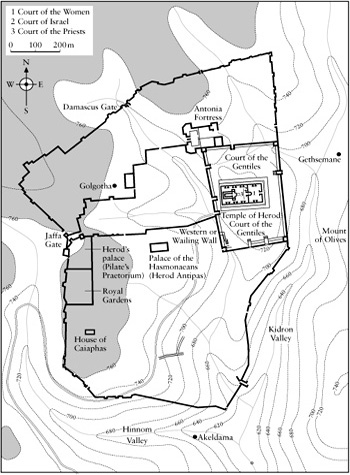
The Jerusalem of Jesus
The traditional version of the Passion of Jesus is coherent and straightforward, even simple. Whether it is preached from the pulpit or read in literature of piety, the story hardly varies. It may even be watched in the cinema: The Passion of the Christ by Mel Gibson, the international box-office hit of 2004, is still fresh in many peoples minds. This is a story which is meant to be perceived with the eyes of faith. It recounts the sacrifice, the self-immolation of the Son of God who willingly offered his life, we are told, for the redemption of the sins of mankind. Without exception all the children of Adam have to accept their own responsibility for it if they are to reap the fruits of the atonement achieved for them all by Christ dying on the cross.
But the same story has also an historical (or I would say pseudo-historical) dimension. It emanates from a simplistic and selective reading of the Gospels without appropriate interpretation, indeed without any interpretation. According to this version the suffering and death of Jesus were the outcome of the hostility and hatred of his enemies, the Jewish priestly leaders and their council, who browbeat the weak but basically decent Roman governor, Pontius Pilate, forcing him to pronounce Jesus guilty, and successfully harangued the multitude of their compatriots to clamour for his crucifixion. Here the responsibility for deicide, the murder of the divine Christ, is placed squarely on the shoulders of the Jewish people.
This representation of the Passion, which will be shown to be biased and twisted, has influenced the Christian world over most of its history. Even today, when the official spokesmen of churches, chapels and denominations reject what the great French historian Jules Isaac once called the doctrine of contempt, lenseignement du mpris, many Christians, clergy and laity, have instinctively applauded the Passion la Mel Gibson. Even the Pope is reported to have approved the version of the movie seen by him with the Delphic words, It is as it was.
It goes without saying that, like everything else we know about Jesus, the account of his last day derives from the New Testament, and more specifically from the discrete narratives of the four Gospels. Unlike the traditional story produced by the Church, they are neither simple nor coherent. On the contrary, as we shall see, they are filled with discrepancies. Without a deliberate and artificial harmonization, which was already attempted in the centuries when Christendom was young and has continued ever since, they seem disconcerting and confusing. They form a mystery within which real history lurks.
To penetrate this mystery, the reader must come to grips with the literary sources that are closest to the reality of the Passion and subject Mark, Matthew, Luke and John, our four principal witnesses, to a stringent critical scrutiny. I like to compare the historian-interpreter to a detective charged with preparing a report to a law court. Four documents lie on his desk. He must pore over them, seek to clarify obscurities, establish facts and point out contradictions. In reality, the process will be simpler than it first appears since three out of the four narratives of the Passion closely resemble one another. Two of them, Mark and Matthew, are nearly identical. In consequence, they can be surveyed together, grasped in a single glance, synoptically, while separate treatment is reserved for the occasional, but often momentous, divergences between the narratives, especially in the Gospel of Luke. Finally, the comparison of Mark, Matthew and Luke the Synoptics with the Fourth Gospel will make plain that the events of the last day of the life of Jesus have been transmitted in two fundamentally different traditions. To define, evaluate and interpret these differences with the help of expert knowledge peppered with common sense is the momentous task facing this inquiry.
No attentive reader of the Gospels can fail to notice the striking contrast between the way the evangelists depict Jewish attitudes towards Jesus before the Passion and during the last few hours of his life.
Up until the fateful week in Jerusalem which ended with the crucifixion, Jesus appears as a charismatic healer and exorcist and a magnetic preacher, a greatly loved and much sought-after figure in the Galilean countryside around the Lake of Gennesaret. He attracted crowds. They avidly listened to him wherever he went, in synagogues, streets, public squares, on hillsides and on the lake shore. The rumour of his approach brought out the sick in droves. Those who were too weak to walk were carried to him on stretchers. Petty-minded synagogue presidents and quibbling village scribes envied him, and were overheard muttering words of disapproval. In their pedestrian thinking the blind, the lame and the lepers should have been cured, and the possessed delivered, on weekdays, not on the Sabbath. Insufficiently versed in Jewish theology, some Galilean scribes murmured blasphemy when Jesus proclaimed that healing was the equivalent of forgiveness of sins, but even if they had dared to speak up, they would have been fighting a losing battle: the holy man from Nazareth enjoyed the trust and support of large segments of the local rural population. Both he and the crowd were familiar with the frame of mind of officialdom towards prophets of God. It did not bother them.
Font size:
Interval:
Bookmark:
Similar books «The passion»
Look at similar books to The passion. We have selected literature similar in name and meaning in the hope of providing readers with more options to find new, interesting, not yet read works.
Discussion, reviews of the book The passion and just readers' own opinions. Leave your comments, write what you think about the work, its meaning or the main characters. Specify what exactly you liked and what you didn't like, and why you think so.

